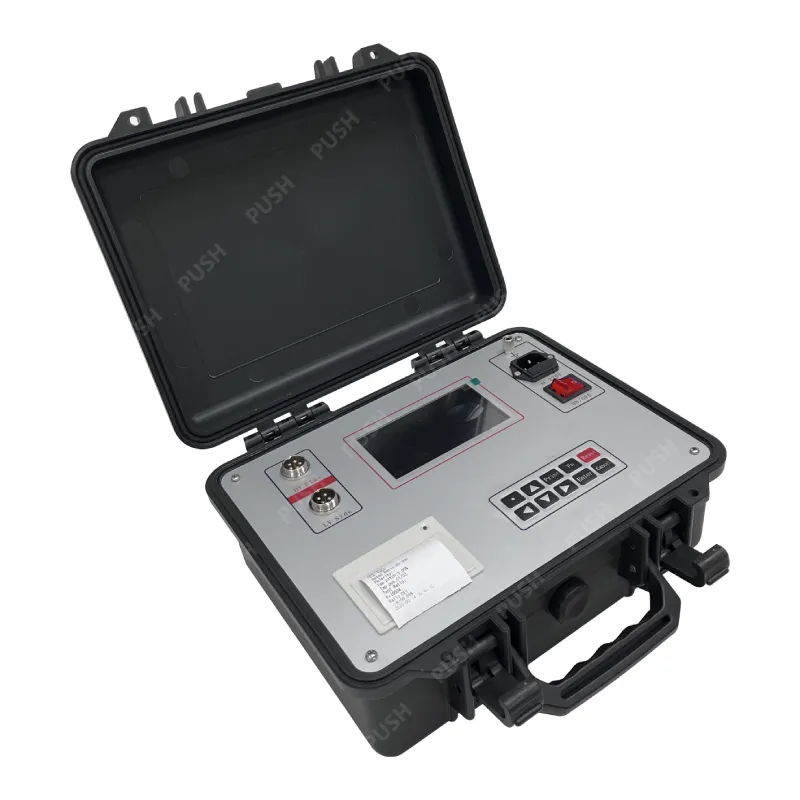 English
English


Turn Ratio Measurement Device for Transformer Testing and Analysis
Understanding Turns Ratio Testers A Vital Tool for Transformer Maintenance
In the world of electrical engineering and maintenance, transformers play a crucial role in the transmission and distribution of electricity. Their efficiency and reliability are paramount for the functioning of power systems. One vital aspect of transformer maintenance is testing the turns ratio, which is where a turns ratio tester comes into play. This article delves into what a turns ratio tester is, how it works, and why it is essential for maintaining transformers.
What is a Turns Ratio Tester?
A turns ratio tester is a specialized instrument designed to measure the turns ratio of a transformer’s windings. The turns ratio refers to the ratio of the number of turns in the primary winding to the number of turns in the secondary winding. This ratio is critical because it directly influences the voltage output of the transformer. Understanding the turns ratio helps ensure that the transformer operates within its designed parameters, and it can help identify faults and discrepancies in transformer performance.
How Does a Turns Ratio Tester Work?
The operation of a turns ratio tester is relatively straightforward but relies on precise measurements and calculations. A typical tester applies a known voltage to one winding of the transformer, usually the primary winding. The tester then measures the resulting voltage in the secondary winding. From these measurements, the device calculates the turns ratio using the formula
\[ \text{Turns Ratio} = \frac{\text{Primary Voltage}}{\text{Secondary Voltage}} \]
Most modern turns ratio testers are equipped with advanced features that allow them to perform tests automatically, record data, and even analyze the results for faults. They often include digital displays and battery-powered operation for portability, making them invaluable on-site tools for electrical engineers and technicians.
turns ratio tester

Why is Testing the Turns Ratio Important?
1. Performance Verification Regular testing ensures that transformers perform according to their specifications. A significant deviation in the turns ratio may indicate issues such as shorted turns, open windings, or manufacturing defects, which can lead to catastrophic failures if left unchecked.
2. Preventive Maintenance By conducting routine turns ratio tests, maintenance teams can proactively identify problems before they escalate. This approach aligns with preventive maintenance strategies, ultimately reducing downtime and repair costs.
3. Safety Assurance Transformers that go untested may pose safety risks due to irregular voltage levels, which can harm connected equipment and create hazards for maintenance personnel. Regularly testing the turns ratio helps mitigate these risks.
4. Operational Efficiency A transformer operating with an incorrect turns ratio can lead to energy losses and inefficiencies. By ensuring that the turns ratio is within the specified range, utility companies can enhance their operational efficiency and reduce energy waste.
5. Compliance and Record Keeping Many regulatory standards necessitate electrical equipment testing and documentation. Using a turns ratio tester allows for the systematic recording of test results, aiding in compliance with industry standards and regulatory requirements.
Conclusion
In summary, a turns ratio tester is an indispensable tool in transformer maintenance that ensures operational reliability, efficiency, and safety. By measuring the turns ratio, technicians can gain critical insights into the performance of transformers, enabling proactive maintenance and prompt issue resolution. As the demand for electricity continues to rise, the role of effective transformer testing becomes increasingly vital in the energy sector. Investing in quality turns ratio testers and adhering to a regular testing schedule is not just a best practice; it is necessary for sustaining a safe and efficient electrical infrastructure.
-
Differences between open cup flash point tester and closed cup flash point testerNewsOct.31,2024
-
The Reliable Load Tap ChangerNewsOct.23,2024
-
The Essential Guide to Hipot TestersNewsOct.23,2024
-
The Digital Insulation TesterNewsOct.23,2024
-
The Best Earth Loop Impedance Tester for SaleNewsOct.23,2024
-
Tan Delta Tester--The Essential Tool for Electrical Insulation TestingNewsOct.23,2024





